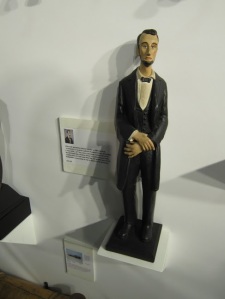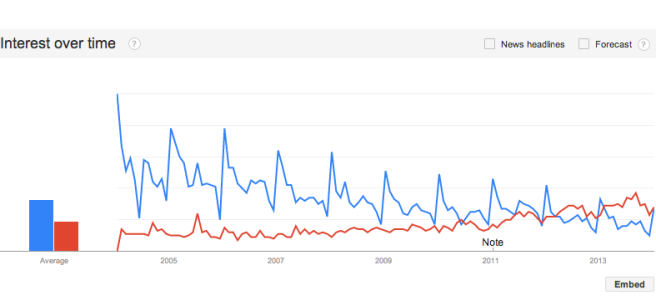The Antiques business builds itself upon history, but its ever-evolving nature is also part of the history.
For the last 10 years, the biggest loss is the closing of stores and malls that once took over main streets as well as urban turf. They were the ultimate destinations where passion and knowledge confluence to cherish objects of rare and beauty, but over years they spiraled down as both supply and demand dwindled.
Here are two of my own personal stories.
Chippewa, Pa is a small town along Ohio River, about 30 miles west of Pittsburgh. Till the middle of the first decade, the main antiques mall boost aisles of antiques and collectibles which attracted traffic from throughout the tri-state area. But as more dealers moved out with no quality vendor to replace them, the space became deserted and overlooked. Like many antiques malls in the country, the reproduction smalls have not only encroached the collectible market but also hurt the reputation of those malls with no choice but filling in any vendor to pay the fees.
 I happened to witness the last days of antiques stores clustered in Uptown areas of Dallas. Back in 2010, there were about five or six stores left along Fairmount Street. The stores offered quite dynamic varieties including some Steampunk, folk and vintage items. But the pressure was building. When the land a store sits on commands much more than all the merchandise together, it is not viable to stay (no matter how trendy it has become) to merely paying the rent. Within a year, the street saw a complete make-over (boutiques instead of antiques). Now the zip code is the hottest commercial real estate market in the state of Texas.
I happened to witness the last days of antiques stores clustered in Uptown areas of Dallas. Back in 2010, there were about five or six stores left along Fairmount Street. The stores offered quite dynamic varieties including some Steampunk, folk and vintage items. But the pressure was building. When the land a store sits on commands much more than all the merchandise together, it is not viable to stay (no matter how trendy it has become) to merely paying the rent. Within a year, the street saw a complete make-over (boutiques instead of antiques). Now the zip code is the hottest commercial real estate market in the state of Texas.
What is next? Although it is hard to predict the future, I would project in the next few years many small high-end antiques shows will face a fundamental decision: change or die.
First, with the overloaded information readily available through a few clicks on a smart phone (with auction records, provenance, etc.), buyers are more cautious than ever in committing a big-item purchase onsite. Granted, the availability of historical or comparable information should not discredit the rarity of some items at hand, but it changes our psyche by slowing the flow of adrenaline, a crucial element that can trigger a sale in a high-end antiques show.
Secondly, the audience for such high-end antiques shows are much older (albeit affluent) on average than those at say Brimfield or Round Top. The next generation of buyers, living in a virtual world, is more conversant with Instagram or Twitter than TV programs (sorry Antiques Roadshow). It is true that there will always be buyers for antiques, high or low; but without a solid base of general interest, dealers will fight an uphill battle of carrying slow-moving merchandise which compounds incrementally with show costs.
High-end shows in major metro areas will likely fare better. Your best customers matter, only to a limited degree. For antiques shows, that segment’s population is more likely to decline. Plus savored collectors are willing to travel, especially to bigger venues in larger cities. It is the incidental customers, with some knowledge and interests in antiques, whose attendance often dictate the success of antiques shows. Not only because savored collectors were probably incidental customers at one time, but also scant foot traffic hurts shows’ finances (even though some dealers may still have a good day). The lack of incidental customer base in smaller metro areas put such shows in disadvantage.
Events all have their own form of living. Once a show starts, it takes its own course of life as time ticks. Little can change that. As hectic as it may sound to manage vendors’ grudges, customers’ complaints, sale issues or even porter assignments, crucial effort must be spent beforehand, to generate buzz. In this case, nothing sounds better and grander than an antiques week, when smaller shows can line up together to project a bigger voice. Whether it is in Philadelphia, New Hampshire, or Nashville, marketing shows as one term helps attract the attention of media and audiences more than the sum of what each individual shows could have done. On this note, HADA and Theta antiques show in Houston were orphaned since they departed to different dates. Perhaps it was done for good reasons. But what is worse? A divided wallet for spending on competing shows or a quiet floor?
If we all believe that future buyers will be internet savvy, nothing better explains the current scenarios than a simple Google trend plot which shows the general interests in the term “antiques show” through the web. If you think shows have seen their better days, add the second term “vintage market”.
Discover more from Urban Art & Antiques
Subscribe to get the latest posts sent to your email.



It's amazing Olga the Queen of Greece knows so much about the American antique market!
LikeLike